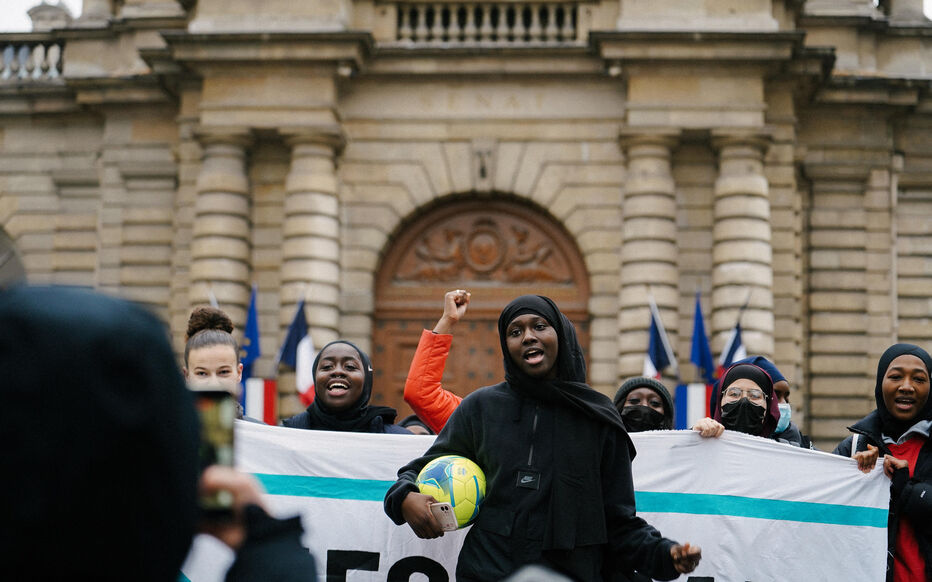Genesis of the movement: protestation against the rising price of fuel and the government policy:
Beginning first on the internet, the “gilets jaunes” movement (a reference to the yellow safety jackets which are used as symbol of the movement) protests against the rising price of gas and, more broadly, expresses dissatisfaction towards the Emmanuel Macron government policy. Their initial statement denounced political measures that weaken lower middle classes and benefit only the rich. The protesters attempt to draw the political attention to their daily social and economic struggles. Supported by large-scale social-media campaigns, initial protests were held throughout France on the 17th of November. Protesters organised numerous roadblocks and operations against motorway tolls, particularly in the proximity of strategic and industrial sites. Despite the lack of official figures, it is estimated that 250 000 protesters demonstrated on 17th of November, and 150 000 one week later, for the “second act”. During the week that followed, the movement continued with less intensity. A call to go to Paris to demonstrate on the 24th of November was issued, and 8000 people braved the ban placed on demonstrating at Champs-Elysées, which led to confrontations with the police and resulted in hundreds of people taken into custody.
Violence and racist acts: a major component or a marginal fringe?
Despite an initially friendly atmosphere, the protest-events have been marred by violence and conflict, which resulted in numerous injuries and one death; a protester was hit by a vehicle and died few minutes later. The driver was taking her child to the hospital, panicked after being stopped at a roadblock and tried to run the gauntlet. This event was the culmination of a series of high tensions surrounding this movement. Furthermore, videos posted on social-media, elayed by local or national newspapers, suggest that discriminatory acts against were perpetrated by some “gilets jaunes”.
An homophobic incident w against a local municipal councillor and his partner was recorded, while several testimonies describe racist and islamophobic acts. A woman who was stopped at a roadblock was verbally abused due to her skin colour, as the protesters shouted at her to “go back to her country”. Another incident was reported in which a veiled woman was forced to remove her headscarf and protesters drew their yellow jackets over their head imitating her scarf and made “monkey noises”. Finally, in a video posted on social media, a group of “gilets jaunes” complimented each other after discovering and reporting clandestine migrants hidden in the back of a truck. Such acts have created huge controversy and condemnations from the government, a segment of the opposition and from the majority of protesters who have strongly distanced themselves from such allegations.
An heterogeneous movement:
French public opinion of the group is divided. The people who do not take part in the protests feel the most affected because of the disturbance brought to their daily life. The informal character and heterogeneous components of the movement make it unprecedented and therefore difficult to define; as a result, political and sociological analysts lack understanding of it. The most common explanations of the movement are:the widening gap between urban and rural areas, and poor and rich, even if an analysis in terms of professional categories reveals a huge diversity of profiles. However, the most significant common point of the protesters is their hostility towards economic and political elites. They therefore express the frustration of a large component of French society vis a vis the political system, although not everybody agrees with their mode of actionl
From the very beginning, the government, first and foremost the French president Emmanuel Macron, expressed a strong opposition to the movement and its tendency to be inflexible and respond with severity, which has led the situation to deteriorate further. Although originally skeptical, opposition parties and trade unions took part in the second gathering in Paris after seeing the success of the first protest. Despite claiming they are not political, some members of the movement are associated with political parties. One of the instigators – who released a video where he urged people to demonstrate that has been seen more than 4 million times – is a former member of the extreme right-wing party of Marine Le Pen. Several protesters involved in violent acts and vandalism also belong to the extremes, both from the right and left. However, generally the “gilets jaunes” claim political neutrality and rare suspicious of attempts by political parties to instrumentalize their movements.
Sources






